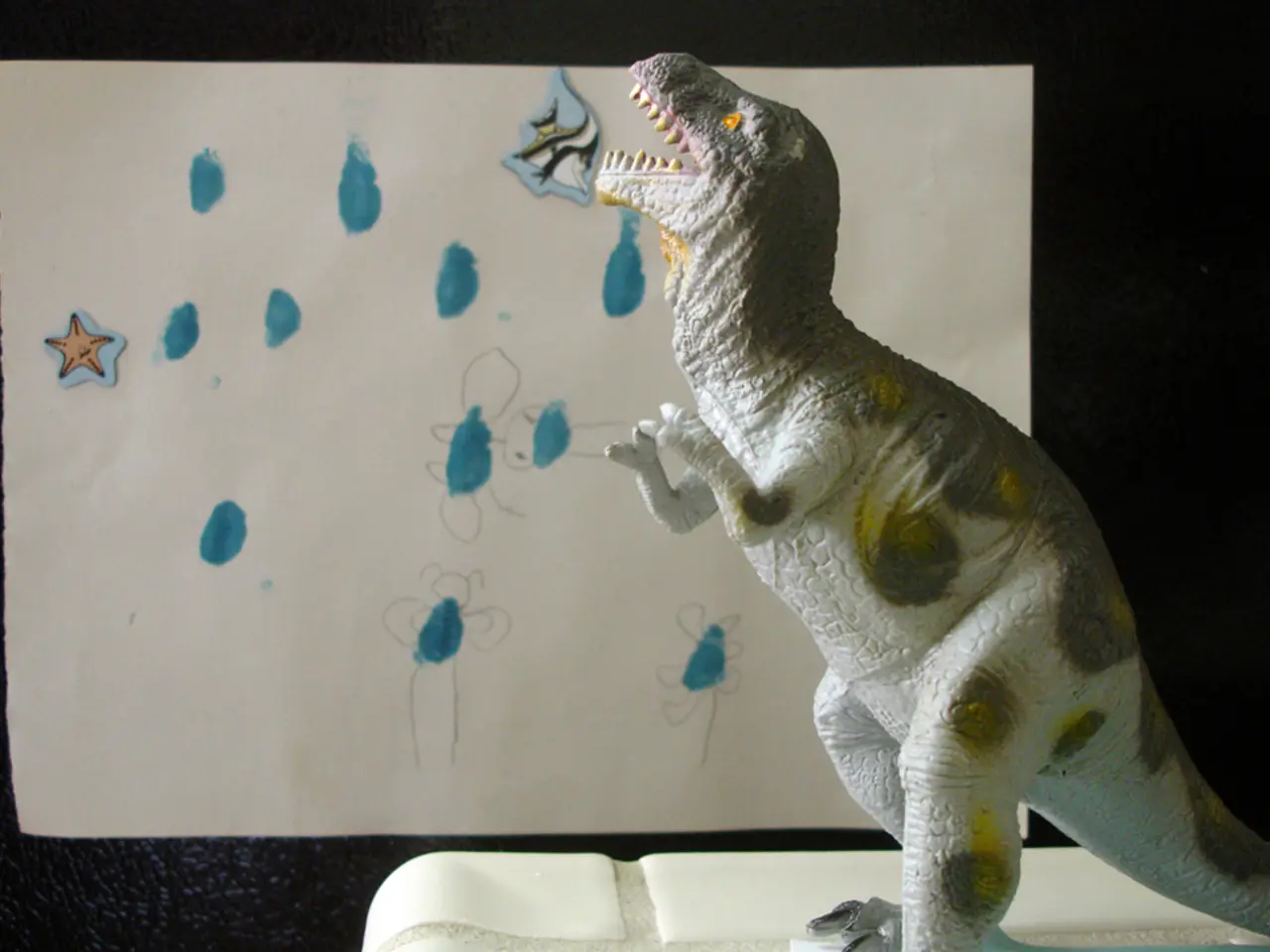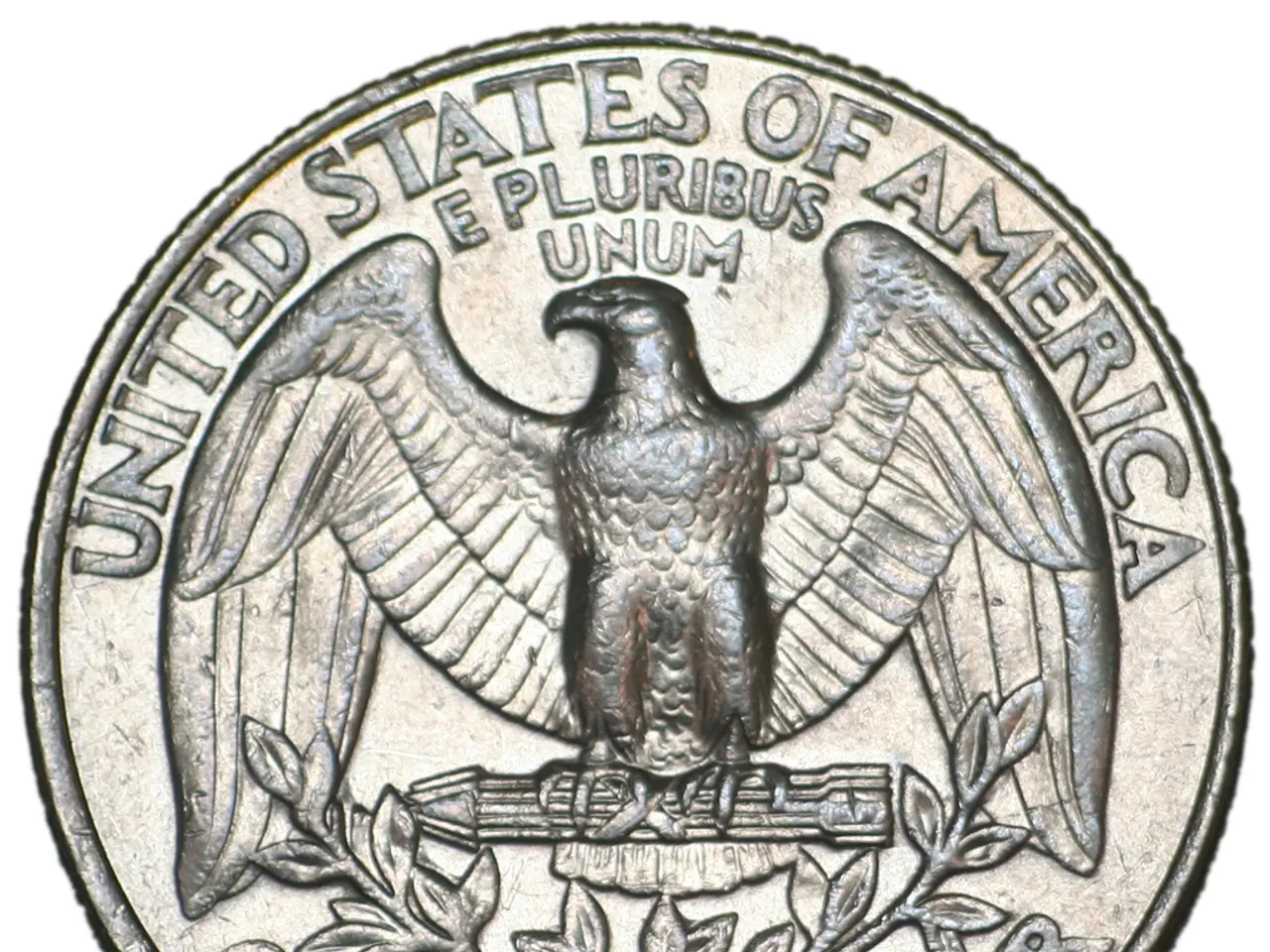A Child of 12 Unearths a 69 Million-Year-Old Dinosaur Remains on a Family Walk in Alberta
In a remarkable discovery, 12-year-old Nathan Hrushkin has unearthed a 69-million-year-old fossil belonging to a juvenile hadrosaur, also known as a duck-billed dinosaur, during a hike in Alberta, Canada. The fossil, found in the Horseshoe Canyon area, is significant as it fills a crucial gap in the fossil record from the late Cretaceous period, a time for which fossils have been scarce in that region.
The bones were carefully removed in protective jackets made of burlap and plaster to ensure their safety during transport to the museum lab for further analysis. The Royal Tyrrell Museum, which recognised the fossil as part of a juvenile hadrosaur, confirmed the discovery through a photo sent to them.
This find contributes to the scientific understanding of the late Cretaceous period in several key ways. Firstly, the geological layers in the area date between 71 and 68 million years ago, a period poorly represented in the fossil record. As a result, Nathan’s discovery provides rare and valuable information about the fauna that inhabited Alberta during this interval.
Secondly, hadrosaurs were likely the most prevalent herbivores in this region at the time, similar in ecological role to modern deer. Finding bones from a juvenile individual helps researchers understand growth and development in these dinosaurs, as well as their paleoecology.
The excavation led to the recovery of between 30 and 50 bones from the same individual, allowing for detailed analysis at the Royal Tyrrell Museum. This enhances the scientific community’s capacity to reconstruct the biology and environment of late Cretaceous dinosaurs in Alberta. The discovery of additional bones from the same dinosaur further suggests that the site may contain a more complete skeleton than initially thought, offering a glimpse into a period of history that was previously underrepresented in the fossil record.
Beyond its scientific value, the discovery underscores the importance of land conservation for preserving natural heritage and enabling future paleontological finds. Nathan’s discovery exemplifies how curiosity and exploration—even by young amateur scientists—can make meaningful contributions to our understanding of Earth’s distant past.
Dion Hrushkin, Nathan’s father, expressed his excitement about the discovery, stating that it was a testament to years of exploration and curiosity. His statement reflects the family’s hope that their ongoing exploration will lead to even greater discoveries in the future.
References: [1] Royal Tyrrell Museum. (n.d.). Late Cretaceous Period. Retrieved from https://www.dinosaurmuseum.ca/dinosaurs-fossils/age-of-dinosaurs/late-cretaceous-period [2] CBC News. (2021, June 23). 12-year-old finds dinosaur fossil in Alberta's Horseshoe Canyon. Retrieved from https://www.cbc.ca/news/canada/calgary/12-year-old-finds-dinosaur-fossil-in-albertas-horseshoe-canyon-1.6088521 [3] National Geographic. (2021, June 29). 12-Year-Old Nathan Hrushkin Finds Rare Dinosaur Fossil in Alberta, Canada. Retrieved from https://www.nationalgeographic.com/science/paleontology/news/2021/06/12-year-old-nathan-hrushkin-finds-rare-dinosaur-fossil-in-alberta-canada/
The discovery of the juvenile hadrosaur's fossil had a significant impact on the scientific understanding of the late Cretaceous period, particularly in the field of environmental science, as the fossil provides rare and valuable information about the fauna that inhabited Alberta during that interval. This finding also contributed to the advancement of technology, as the excavation led to the recovery of multiple bones, allowing for detailed analysis and reconstruction of the biology and environment of late Cretaceous dinosaurs in Alberta. The discovery demonstrates the importance of space-and-astronomy, technology, and environmental-science in understanding Earth's distant past.




